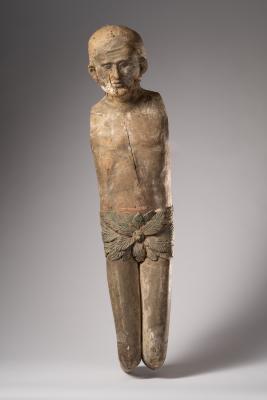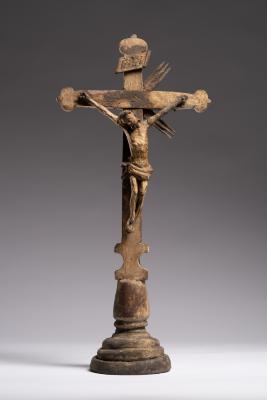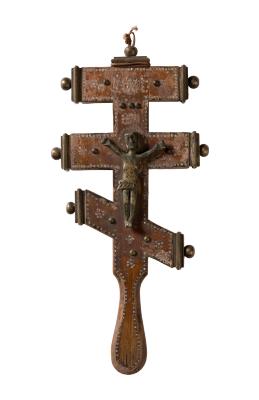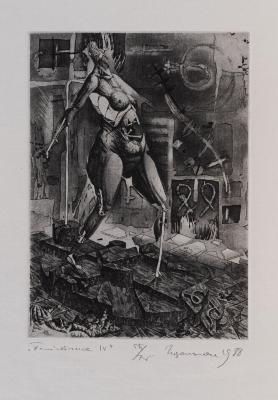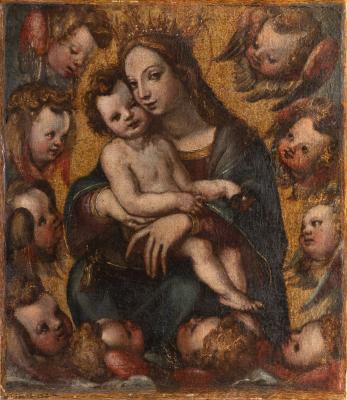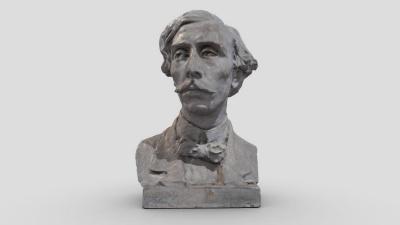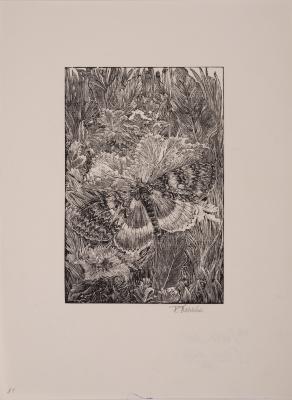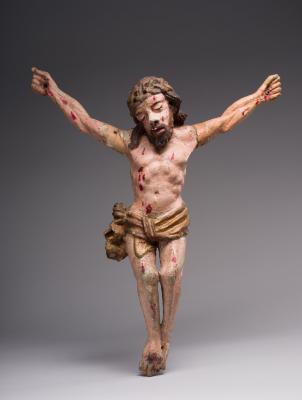The composition is known in a version of 1816, which was issued in the album called Raccolta di Cinquanta Costumi li più interessanti delle città, terre e paesi in provincie diverse del Regno di Napoli (Collection of Fifty Most Interesting Picturesque Costumes from Cities, Towns, and Villages of Different Provinces of the Kingdom of Naples) published by Giovanni Scudellari in Rome in 1817. The work was based on the graphic work of 1791 by the Neapolitan artist Alessandro d'Anna, which is now preserved in the Museo Nazionale di San Martino. Alessandro d'Anna died in 1810, and his works became available to Bartolomeo Pinelli. The artist made a copy after the composition by Alessandro d'Anna. However, the image of a woman in B. Pinelli's work is more refined, in contrast to the bulky woman painted by the Neapolitan artist. The author depicted a noble lady with a headdress, in luxurious clothes, and with a necklace on her neck. A little girl walking beside her is depicted in the same expensive clothes. There is a city fragment with a tall tower in the background. Depicted on the engraving is the city of Piedimonte d'Alifo (d'Alife), located deep in the province of Terra di Lavoro (now the province of Campania). The people's clothing is painted with bright colours, while the trees, shrubs, and the distant views – with dimmed ones.












